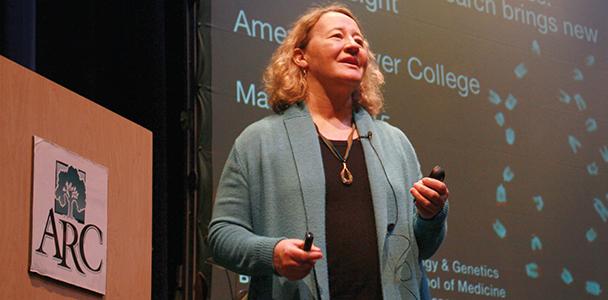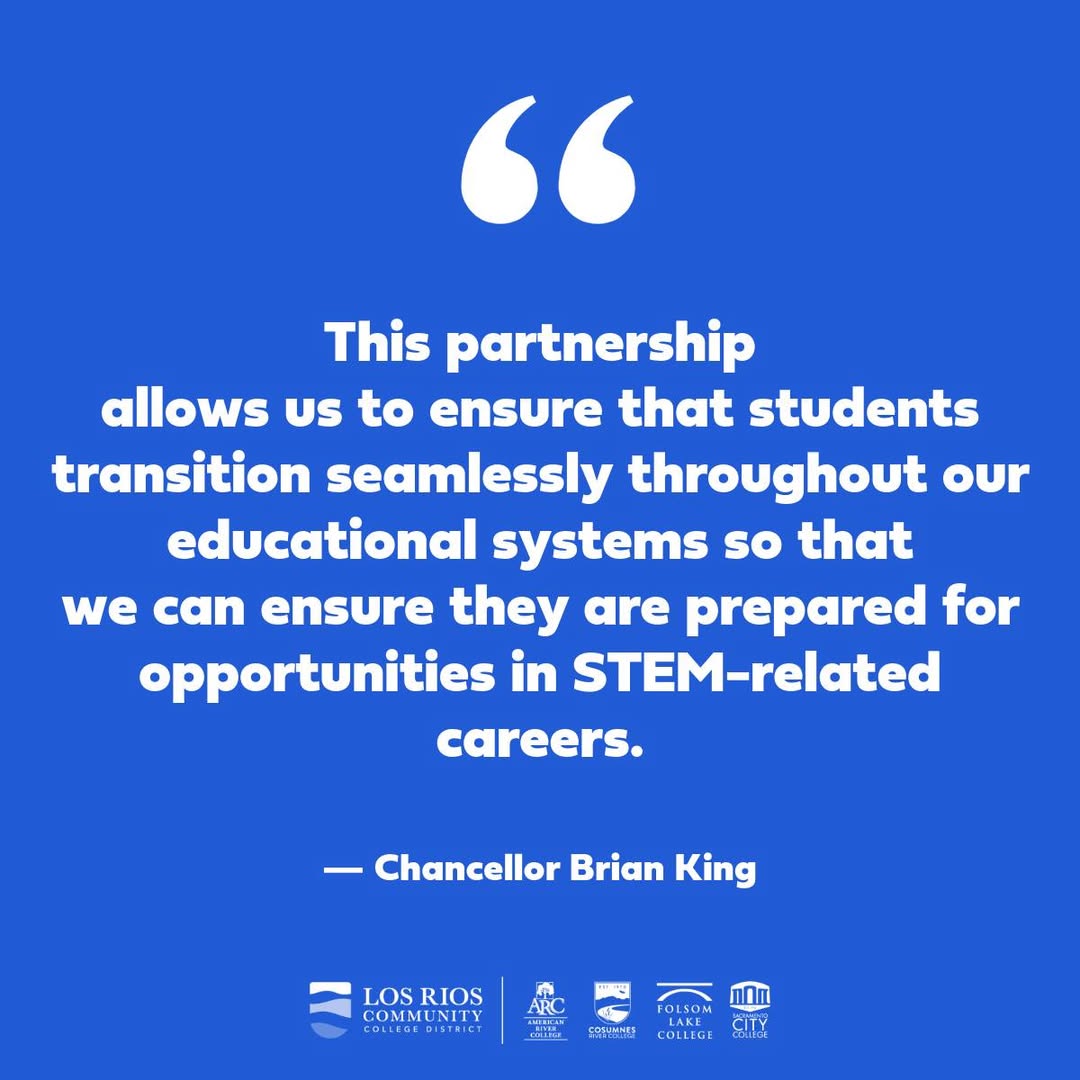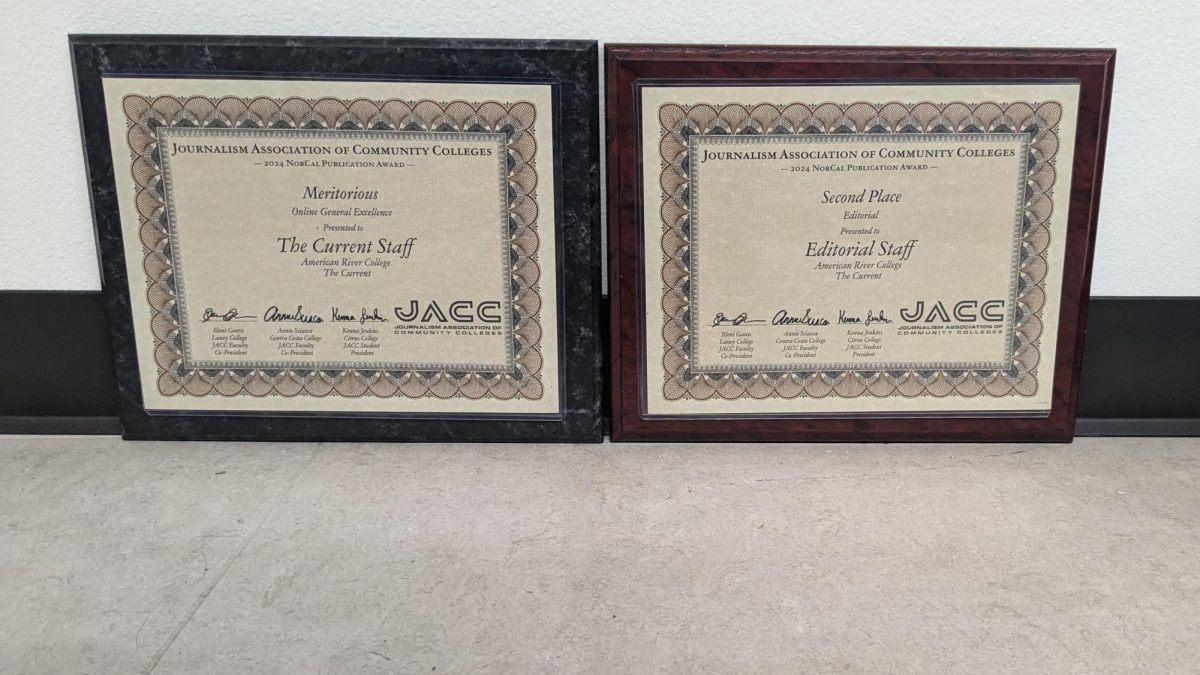Nobel laureate and Johns Hopkins professor Carol Greider wasn’t sure if she’d ever stepped foot on American River College’s main campus before Monday. The only time she’d had a reason to was in 1967, when her mother was in her first year as a botany professor at ARC.
Tragically, Jean Foley Greider’s time at ARC ended the same year it began when, according to her daughter, she took her own life. Grieder was six at the time, and “didn’t really know” her mother before her death.
Part of Greider’s reason for visiting that day was to find out more about her mother and her time teaching at ARC.
Greider’s mother held a PhD in botany from UC Berkeley and taught for a year at ARC while the Greider family, which included her father, Kenneth Greider, a physicist and professor at UC Davis, and her older brother Mark Greider, lived in Davis.
After Jean’s death, a redwood tree near the horticulture area of campus was named after her. Now, multiple trees have grown around the original and the area is called the Greider Grove.
A plaque was installed in Jean’s memory on Monday at the grove, which Greider and her daughter, Gwendolyn, were present for.
With a set of parents like Greider’s, one could expect that the Nobel laureate was always a scientist waiting to happen. But Greider had apparent dyslexia from an early age, at a time when people with the condition, she said, “were just considered dull.”
“It wasn’t really talked about,” Greider said. “It wasn’t until I went to college or later that they found out it had to do with interpreting language. It turns out that if you just put your blinders on and do what you want to do, those things don’t get in your way.”
Greider first found an interest in science during high school, when she was particularly drawn to marine biology, and encouraged to study it by a “young and enthusiastic” teacher.
She then transferred to UC Santa Barbara with a focus in marine biology, but shifted to molecular biology soon after, with the encouragement of a professor, Patricia Sweazy, who had collaborated with Greider’s mother during her time at Yale.
Part of the switch was motivated by Greider’s lack of interest in the statistics and observation of marine biology, as compared to her interest in the cause-and-effect of molecular biology.
“A lot of things in marine biology are more descriptive,” said Greider. “I love being out in the ocean and seeing things, but molecular biology is more about mechanistic understanding. That’s what I find more gratifying; going in and doing and experiment and actually manipulating something, and seeing what the outcome is.”
Greider transferred to Berkeley for her graduate program, and eventually began working in a lab for professor Elizabeth Blackburn, studying telomeres, with the biggest question being how they elongated over time.
“Every time a cell divides, there’s a little bit of shortening. Of course, that can’t go on forever, or we wouldn’t be here on Earth,” Greider explained.
Greider and her lab partners discovered in 1985 that telomeres are made of “nonsense” DNA that act as a buffer for the ends of chromosomes. The research was groundbreaking, but it wasn’t until 2009 that Greider, Blackburn and lab member Jack. K Szostak were rewarded for their work with a Nobel Prize in Medicine of Physiology.
Greider and Blackburn are two of the six women Nobel laureates in the category, and 11 women have won it in Nobel history.
Greider joined the Johns Hopkins School of Medicine in 1997, and was named the Daniel Nathans professor and director of the Department of Molecular Biology and Genetics.
Prior to speaking at ARC on Monday, she had already made appearances at Ohio State University and Middlebury College. Her lab at Johns Hopkins, which consists of her and ten other people, is still researching telomeres and telomerase.
As chairwoman of her department, there are 14 other faculty members working with her; simultaneously, she’s leading recruitment for her department, as 300 people just applied for one open position for assistant professor.
As Greider puts it, she’s “a little busy.”
And during one of her two lectures at ARC, she gave the audience details on how the work being done by her lab could possibly cure cancer or age-related illnesses.
The two are caused by different telomerase tendencies; an abundance of telomerase is typical in cancer cells, while shorter telomeres can trigger degenerative diseases.
As Greider puts it, there are hundreds of labs working on telomerase-based research now, a level of competition she welcomes.
“They say imitation is the sincerest form of flattery,” Greider said with a laugh.













